The Dosse was navigable in the Middle Ages
The Dosse was still navigable in the Middle Ages, and salt was brought to Wusterhausen from the Lüneburg area via the Ilmenau, Havel and Dosse rivers. The name "Schiffahrt" still testifies to the fact that the medieval harbor or landing place was located here. But the Slavs also settled here - the oak posts found during road works are dendrochronologically dated to the year 1116. The rows of posts may have been part of the walkways leading from the Slavic harbor to the castle.
In the Middle Ages, this was probably an important port for the goods transported on the Dosse.
In the Middle Ages, salt was a valuable commodity, on which duties were levied. Wusterhausen was in possession of customs justice, which brought considerable prosperity to the city. In 1560, the Elector of Brandenburg issued an import ban for "foreign" salt - as a result, the city lost important income. The Elector sought to supply his area with local salt Attempts failed, many towns were given back the right to trade in salt, Wusterhausen was not among them.
The harbor was still accessible to small ships at the beginning of the 18th century, although it was very silted up.
Up until the 1950s, timber was still being floated to the sawmills. One of them, with a railway siding, had its landing for the rafted wood at today's lower part of the shipping lane - where the meadow orchard is today.
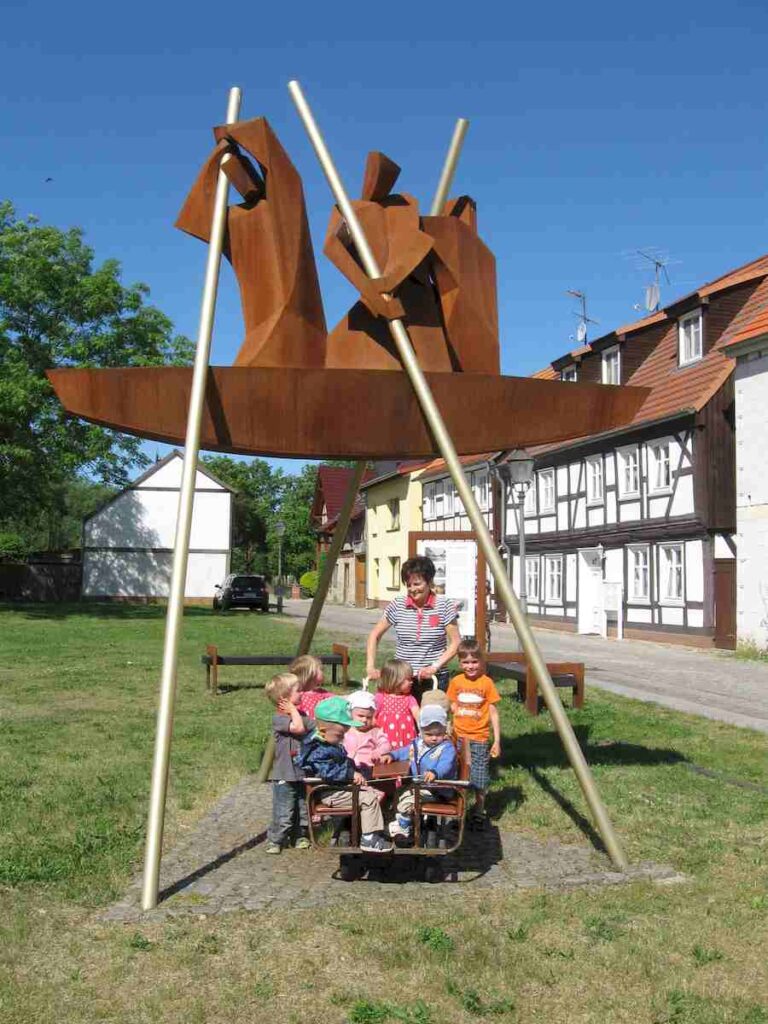

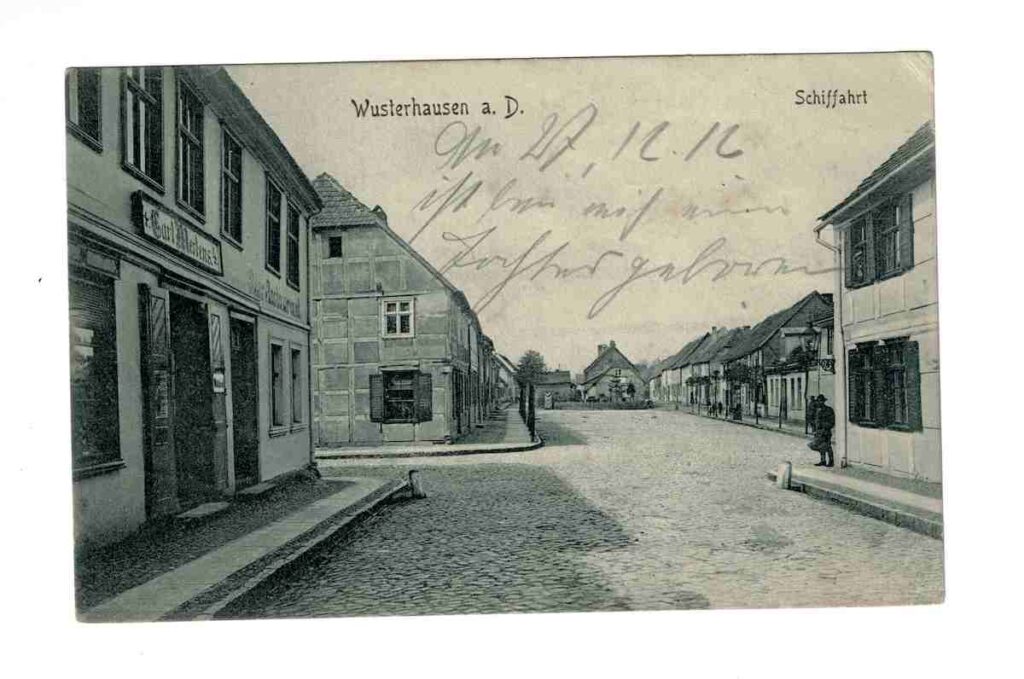
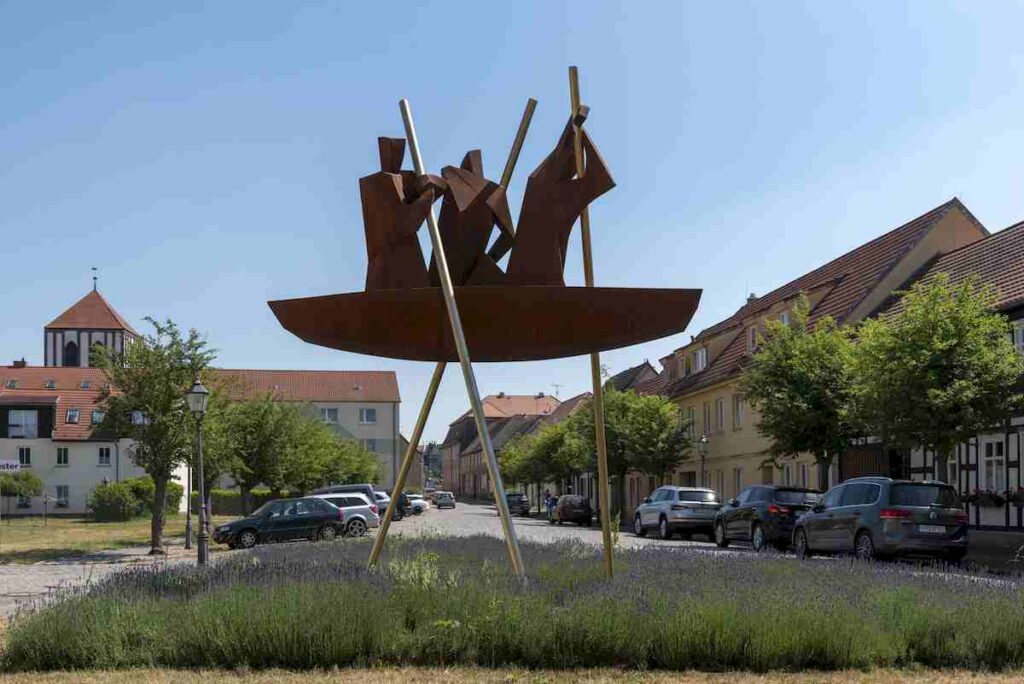
Shipping, sculpture and monuments
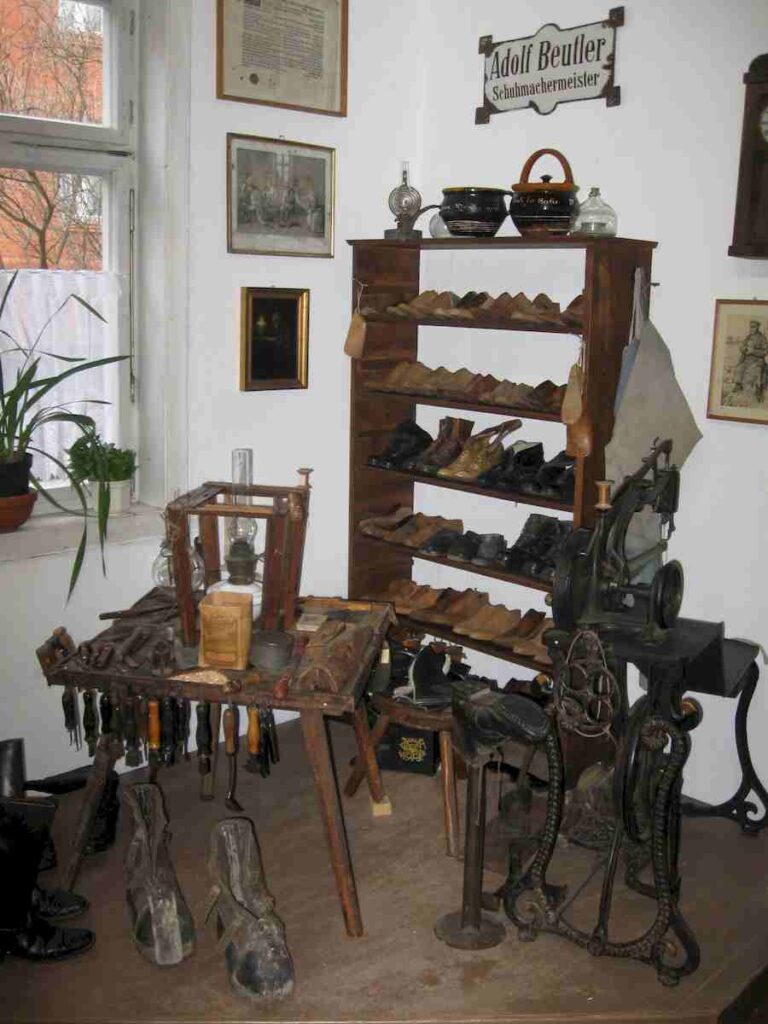
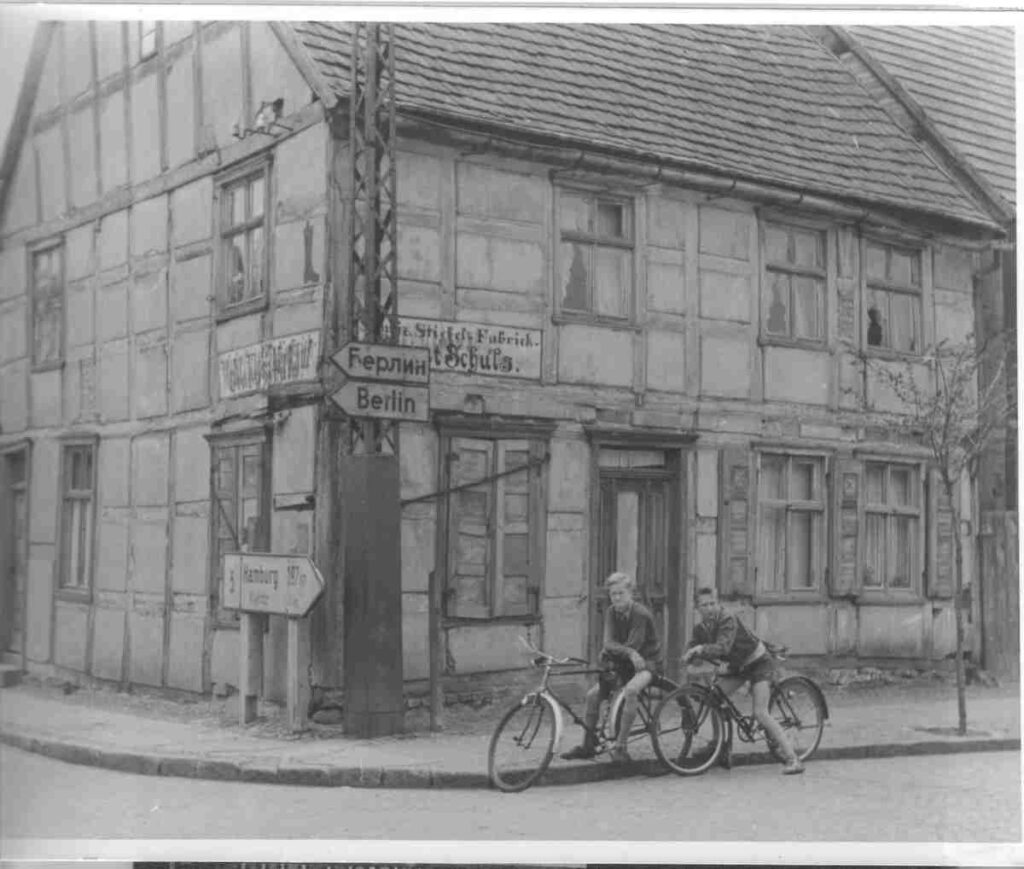
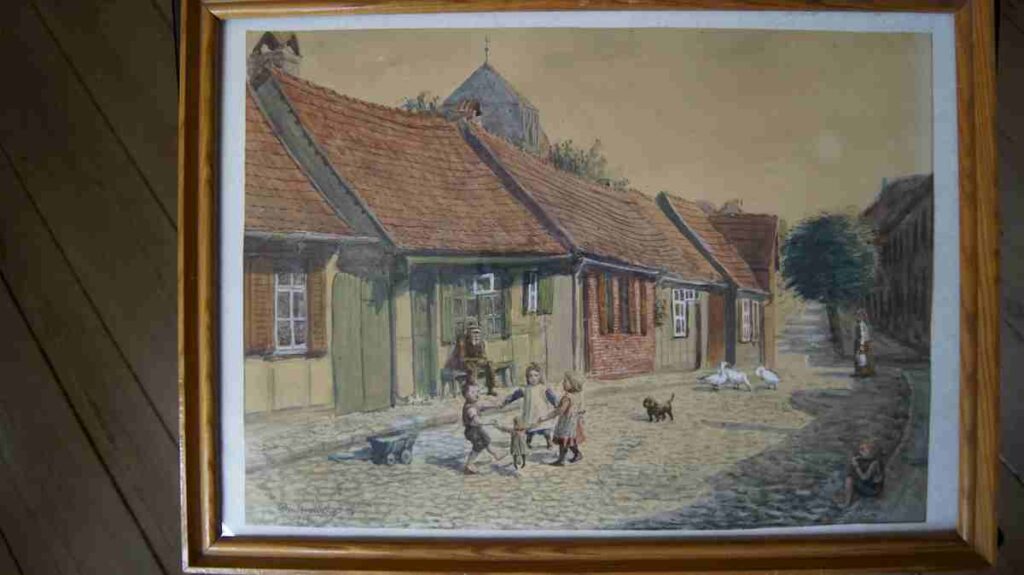
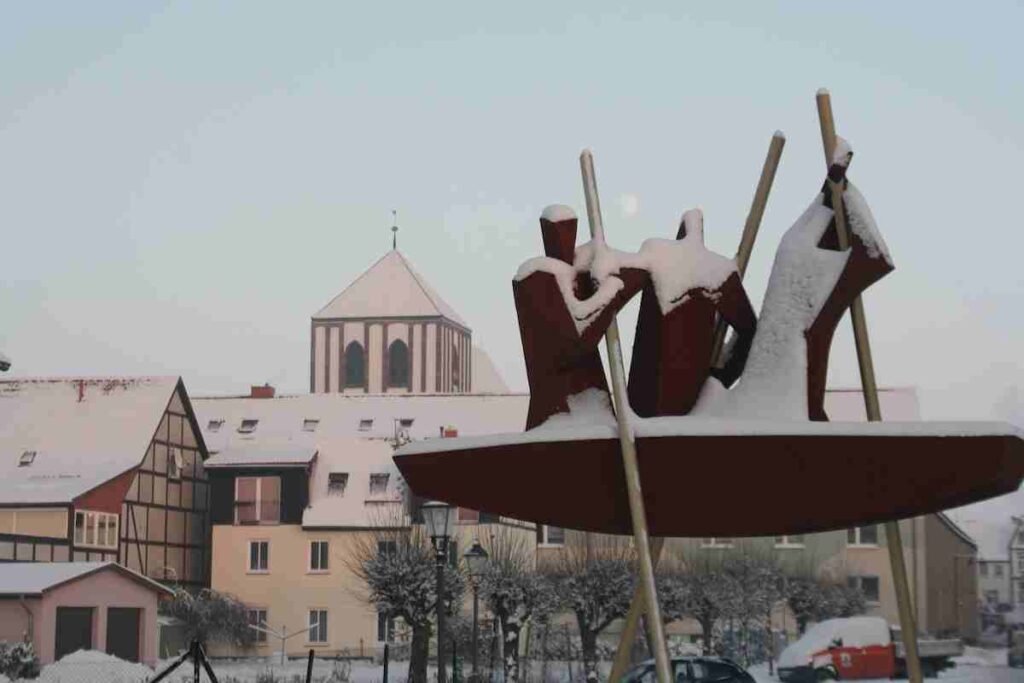
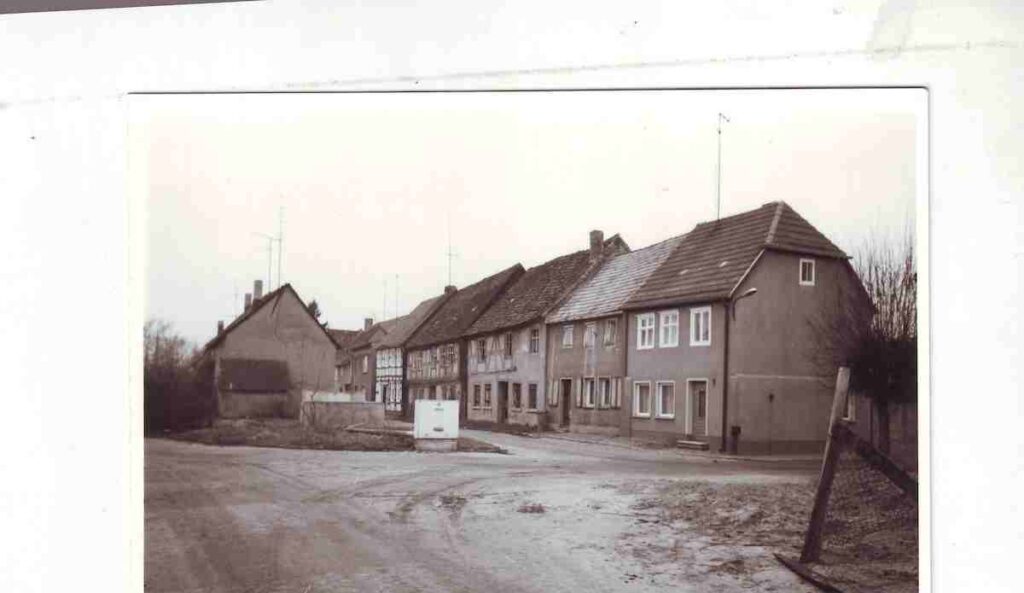
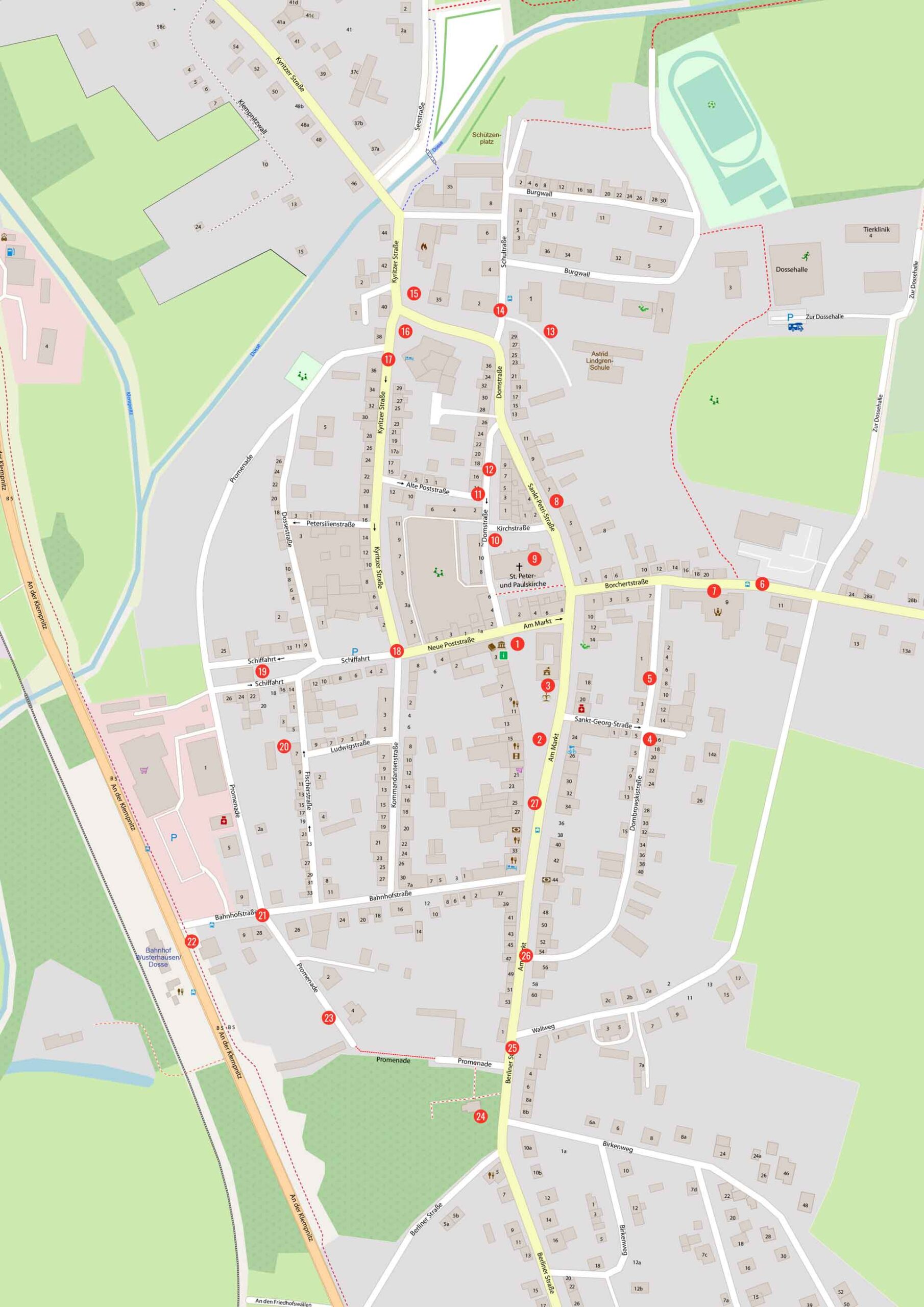
City walk map general view
